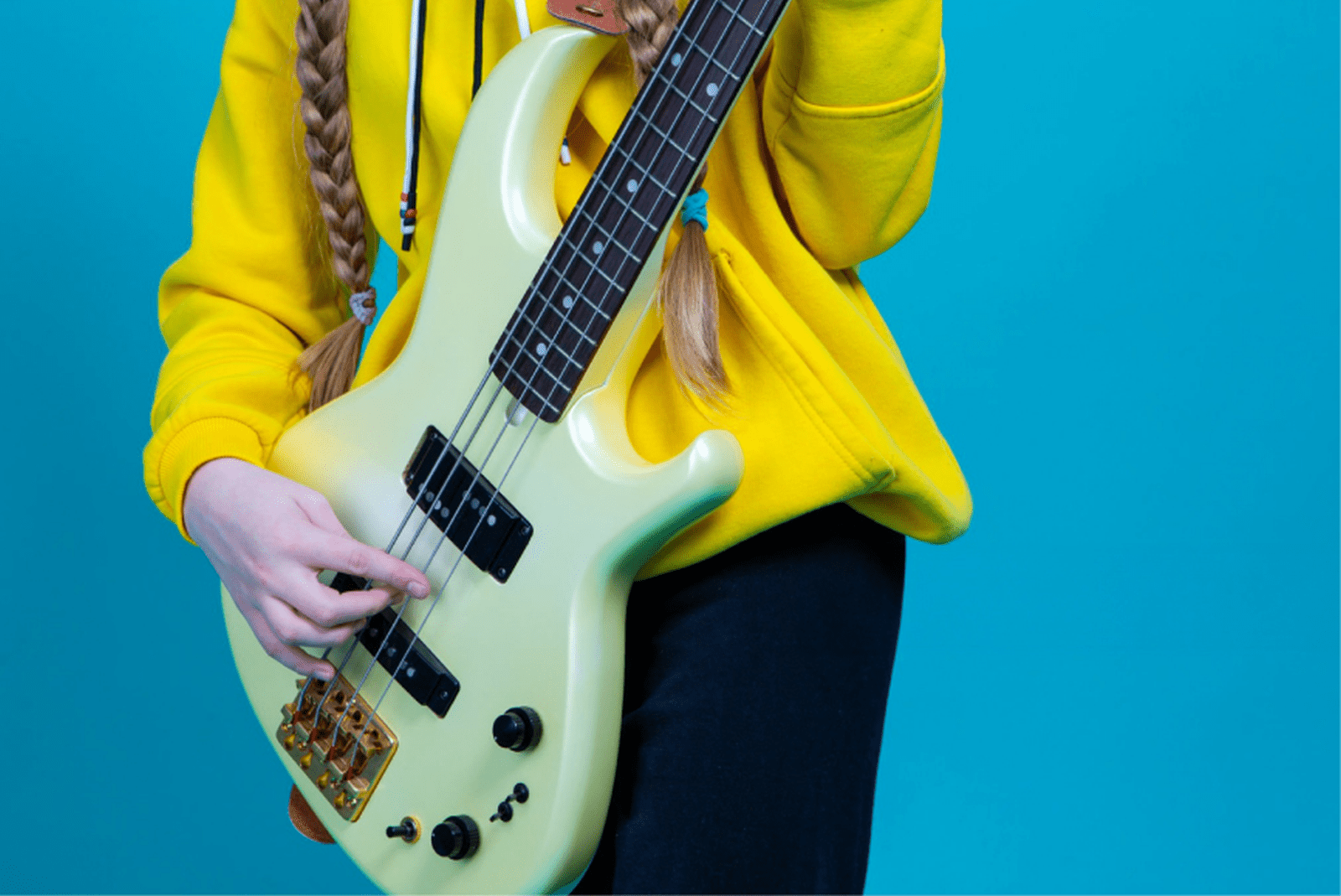The Basics of Playing the Bass Guitar: First Steps for Beginners
April 08, 2024
The bass guitar is a crucial instrument in modern music, playing a key role in most musical genres. If your child is learning or is about to start learning this instrument, it's important to understand what the learning process involves and how online lessons and online art schools can be great aids in this journey. In this article, we'll explore the fundamental steps to help beginners get started with the bass guitar, and discuss how online lessons and online art schools can support their learning.
1. Understanding the Basics of the Bass Guitar
Before diving into playing, it's essential to understand what a bass guitar is. This instrument typically has four or five strings and is primarily used to create the rhythmic and harmonic foundation in music. Compared to a standard electric guitar, the bass guitar has a longer scale length and thicker strings, which gives it a deep, resonant sound.2. Choosing the Right Bass Guitar
For beginner bassists, selecting the right instrument is crucial. Key factors to consider include:- Size and Weight: For children, it’s better to choose a bass guitar that is smaller and lighter, making it easier for them to handle.
- Quality: Beginner bass guitars don’t need to be expensive but should be reliable and well-made.
- Adjustability: Ensure the instrument is well-set up and doesn’t require complicated adjustments, which will make learning easier.
3. Basic Playing Techniques for the Bass Guitar
Here are some essential aspects to help beginners on their first steps:- Proper Hand Positioning: Teach your child how to hold the bass guitar correctly and position their hands. The right hand is responsible for plucking the strings, while the left hand is used for pressing the strings on the fretboard.
- Basic Chords and Notes: Start with learning basic chords and notes. This will help your child understand how musical phrases are constructed and used in compositions.
- Rhythm and Tempo: The bass guitar plays a critical role in creating rhythm. Teach your child the basics of rhythm and tempo, using a metronome or simple rhythmic exercises.
4. Online Lessons and Online Art Schools
Modern technology has greatly facilitated the learning process. Online lessons and online art schools offer numerous advantages for beginners:- Access to Quality Resources: Online lessons allow your child to learn from professionals without leaving home. This is especially useful for lessons that require continuous guidance and technique adjustment.
- Flexible Schedule: Online lessons offer the flexibility to choose lesson times, making it more convenient to fit into family schedules.
- Additional Materials: Many online courses provide access to educational materials, video tutorials, and interactive exercises that deepen understanding and skill development.




